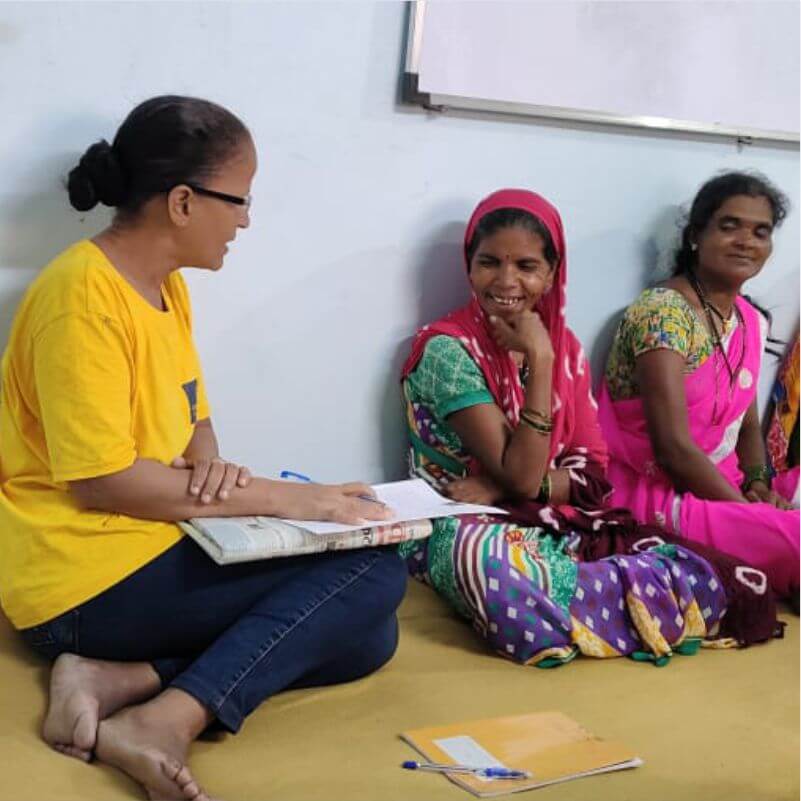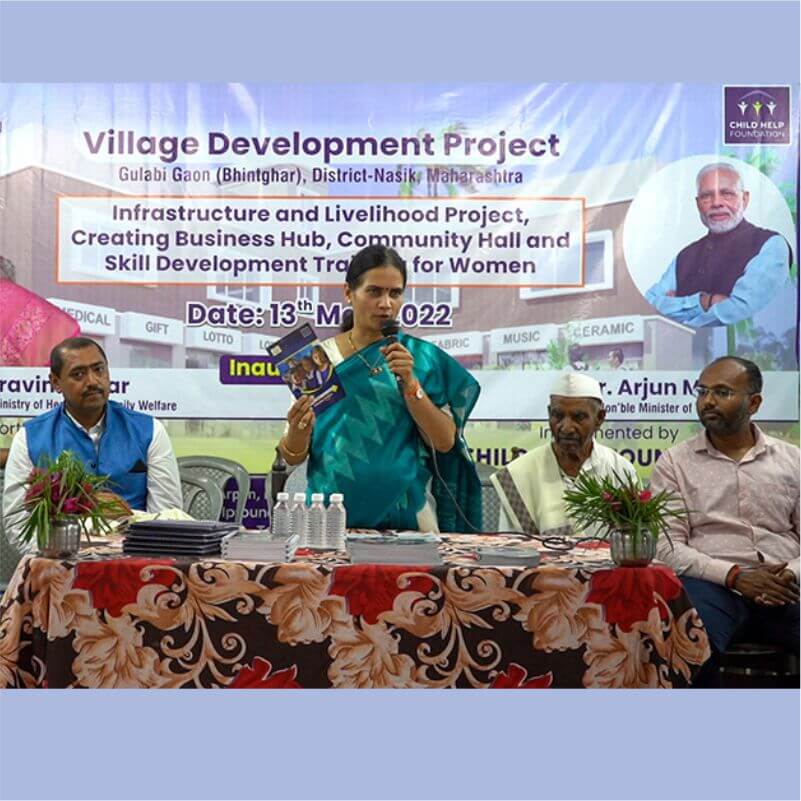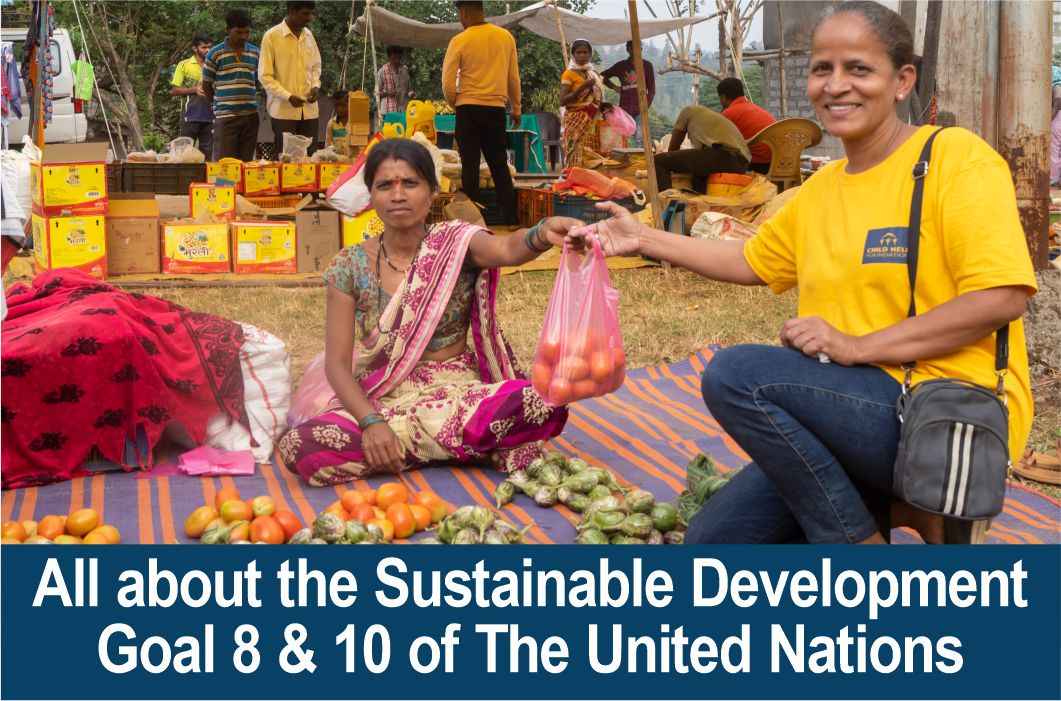The Sustainable Development Goals are ideologies adopted by the UN as an initiative to make the world a better place by 2030. It is a strategy for the welfare of people, the environment, and the economy. There are 169 targets set to emphasize the importance and ambition of the new global Agenda, in addition to the 17 overall Sustainable Development Goals.
Sustainable Development Goal 8 focuses on achieving decent work and economic growth. It strives for full and fair employment and productive labor for all, irrespective of their background, race or gender, and promotes inclusive and sustainable growth. It means achieving higher levels of economic productivity through diversification, technological upgrading and focusing on all genders equally with added high-value and labor-intensive sectors. Several programmes were organized in India, including Make in India, Startup India, Digital India, and Skill India to help youth get jobs. All of these efforts demonstrate the nation's dedication to achieving the objectives set forth for the strategy of employment and growth. Despite the economy's rapid expansion, many employees endured dire poverty for a significant period. As there aren't enough jobs available for the labor force, inequality seems to be progressively growing everywhere.
In order for the industry to expand, rural sectors should be developed. Natural resources that are already present and sparsely populated land are used in rural development as a source of livelihood. Tremendous improvements and adjustments have been done in the field of rural development, and the beneficial effects have significantly impacted economic growth. Rapid economic development can also help developing and least developed nations narrow the wage gap with developed nations, thereby reducing the stark disparities between the rich and the poor. SDG 8 can have an effect in a number of distinct ways, including increasing the number and quality of jobs available to people, especially to those who are unemployed or underemployed at the moment.

Sustainable Development Goal 10 is similar in that it focuses inequality within and between countries. It aims to reduce inequalities in income as well as those based on age, sex, disability, race, ethnicity, origin, religion, economic or other status within a country. The goal addresses inequalities among countries, including those related to representation, migration and development assistance. When it comes to the resources and opportunities that people have access to, inequality begins with birth. Early childhood limited the opportunity for the realization of one's rights and the capacity to reach one's full potential, as well as the social and economic inequities. Inequality tendencies are passed on from one generation to the next. Therefore, the solution to reduce intergenerational poverty and inequality is investing in all children early on, especially the poorest and most neglected.
Various communities have made significant achievements towards lifting people out of poverty from the most vulnerable nations, to the least developed countries and the small island countries. However, inequality still persists and large disparities remain in access to health and education services. Discrimination based on age, gender, ethnic or racial group, disability status, sexual orientation, migratory status, residence or other factors serve to disadvantage some individuals in many different and often invisible ways, throughout their lives. These patterns of inequality get passed on from one generation to another. Therefore, early interventions and investing in all children, especially the poorest and most marginalized, is central to breaking intergenerational poverty and inequality.
UNICEF’s work under Goal 10 focuses on investments in social-protection programmes and policies to reduce the lifelong consequences of inequality and discrimination. Social protection, that can come in the form of skill development, universal child grant and other types of donation transfer and in-kind programmes, connect families with health care, nutritious food and quality education to give all children a fair chance in life. UNICEF centers on supporting countries to enact recommendations by the Committee on the Rights of Child, which monitors implementation of the Convention on the Rights of the Child (CRC). UNICEF also supports countries in their pledge to leave no one behind and eliminate discrimination by collecting data on the prevalence on discrimination experienced by individuals.
Village development is the attempt to enhance a village's quality of life and economic prosperity, often via the execution of various initiatives and projects. It can include infrastructure projects such as building roads, schools and health care facilities, as well as initiatives to promote agriculture, entrepreneurship and other economic activities. Village development may also involve empowering local groups to participate in planning, decision-making, and promoting social and cultural activities.The formation of a healthy, self-sufficient community that can meet the requirements of its people is the ultimate goal of village development. Village Development can contribute to the achievements of several of the SDGs such as No poverty (SDG 1), Good Health and Well-being (SDG 3), Quality Education (SDG 4), Gender Equality (SDG 5), Decent Work and Economic Growth (SDG8), Industry, Innovation and Infrastructure (SDG 9) and Sustainable Cities and Communities (SDG 11). Increased economic prospects and a decrease in poverty can be achieved with the help of initiatives that promote the growth of small businesses and other sources of income. Environmental protection and the long-term survival of rural communities can both be supported through initiatives that encourage sustainable land use and resource management.

Child Help Foundation’s work under SDG 8 & 10
Child Help Foundation is determined to achieve sustainable development goals like gender equality, education, clean water access, and basic hygiene. In addition to humanitarian assistance, children in critical condition receive emergency medical care. The mission of the Child Help Foundation is to expand programmes that benefit society.
Child Help Foundation initiated village development to help the villagers who were suffering from poverty. The India Infoline Foundation collaborated with us to implement the Women's Empowerment Project (IFL). The Business Hub and Community Hall Foundation's Inaugural Ceremony was held in Gulabigaon (Bhintghar Village), Nashik, Maharashtra. The main aim of the Business Hub and Community Hall is to enhance the lives of the villagers by supporting their families. The villagers required a sizable Bazaar Haat (Market Place) as a space to conduct marketing and trade activities. They can also organize special product exhibitions or mass product sales in a community hall. Further, they needed help to deepen and enlarge 30 more wells. This project helps close the gap between the rural parts of societies and the urban world's economic practices by providing new livelihood opportunities for the villagers. Over 104 people participated in this programme. The villagers said they liked the idea of the initiative and thought it would help them reduce population migration due to new sources of livelihood and education for their children.

Child Help Foundation makes a collective effort to empower and cultivate children, exceptional people from rural areas of the country. We also promote women's emancipation and the spirit of entrepreneurship and provide opportunities for the village to become more independent. We believe empowered women also can focus on providing care for their families and children by meeting their basic needs, such as their social, emotional, spiritual, and intellectual requirements.
“When we have the privilege to help our fellows succeed we should do our part and we at Child Help Foundation believe that rural development is the pillar to the development of the country and by empowering that we strengthen the Indian economy”.
- Mr. Shaji Varghese (CEO, Child Help Foundation)
